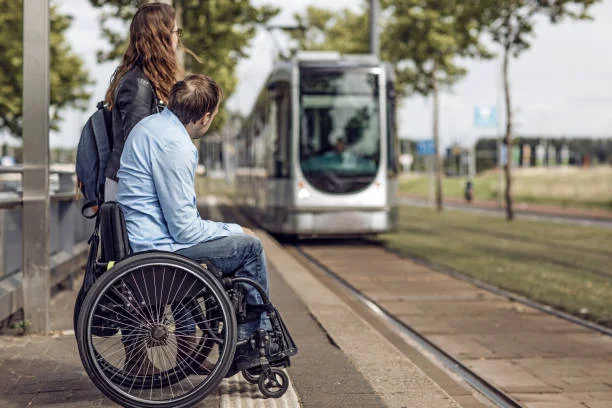Choosing the right long distance transport for a disabled loved one is a decision that requires careful thought, empathy, and detailed planning. It’s not just about reaching a destination; it’s about ensuring safety, comfort, and dignity along the journey. The needs of disabled individuals vary greatly, from mobility issues and medical equipment requirements to emotional and physical comfort. With various transport services available, including non-emergency medical transport, ambulances, and accessible vans, it’s important to understand what to look for when evaluating each option. We will explore how to make an informed choice that prioritizes both practicality and compassion for the traveler and their family.
Want more on this? Here’s a piece that pairs perfectly.
Key Factors to Consider When Selecting Long Distance Disabled Transport
Understand the Medical Needs and Limitations of Your Loved One
Before contacting any long distance transport service for the disabled, take a full inventory of your loved one’s medical and physical needs. Does the individual require oxygen, a stretcher, or a wheelchair-accessible vehicle? Are they able to sit upright for extended periods, or will they need to lie down for the duration of the journey? Are there medical conditions—such as seizures, respiratory issues, or cognitive impairments—that might require the presence of a nurse or EMT? This step is foundational. Choosing the correct transport method hinges on matching these health requirements with the services offered by the provider.
It’s also essential to consider the length of the journey. The longer the distance, the more critical these accommodations become. For example, what might be tolerable for a short local trip could become hazardous or deeply uncomfortable over a 500-mile journey. Documenting these needs and discussing them with a medical professional beforehand will help you avoid last-minute decisions that could compromise the safety and well-being of your loved one.
Evaluate the Type of Transport Services Available
Not all transportation services for individuals with disabilities are the same. Some are designed primarily for comfort and accessibility, such as wheelchair vans or ADA-compliant vehicles, while others are equipped with medical staff and onboard equipment for more intensive care. If your loved one requires monitoring or may need intervention en route, a long-distance ambulance service like Medic Trans could be appropriate, as these often include paramedics and essential medical equipment. On the other hand, if the individual is stable and requires minimal assistance beyond a ramp or lift, a non-emergency medical transport van may suffice. You should also inquire about the vehicle’s interior.
Are they climate-controlled? Is there a place for a caregiver to ride along? These details make a significant difference in the quality of travel. The ability to adapt the transport to suit the person’s condition, comfort, and dignity is a clear sign of a well-equipped service. Ensure that the transport type matches not only the medical condition, but also the emotional needs and preferences of the passenger.
Check Staff Qualifications and Support Capabilities
It’s crucial to learn who will be accompanying your loved one during the journey. Ask the transport company whether trained medical personnel will be present if necessary. Even if the trip is non-emergency, some individuals with disabilities may experience complications that require a trained response. Find out if the staff has experience with disabilities similar to your loved one’s condition. Are they trained in CPR, patient handling, or operation of medical devices?
Additionally, evaluate how communicative and supportive the staff is when you ask questions. Do they explain procedures clearly? Are they compassionate and patient when discussing your loved one’s needs? While this is not about titles or credentials, understanding their real-world capability and how they respond to your concerns can offer strong insight. A supportive and attentive transport team can ease anxiety for both the passenger and their family, turning a potentially stressful trip into a safe and calm experience.
Assess Comfort, Privacy, and Emotional Well-being
A disabled person’s emotional comfort during long distance transport is just as vital as physical safety. The ability to maintain privacy, rest comfortably, and feel cared for can shape the entire journey. Some services provide reclining or padded stretchers, privacy curtains, calming music, or access to a support companion, all of which can make a significant impact. Ask how often breaks can be taken on long ground trips. Will your loved one have access to food, water, or restrooms along the way? Additionally, inquire about how they manage emotional distress—do they provide calming strategies or allow a caregiver to accompany the individual during transport? Transporting someone with disabilities isn’t just about logistics; it’s about empathy.
A company that places equal emphasis on medical safety and emotional dignity shows a commitment to holistic care. When making your decision, ask the provider to walk you through a full trip scenario from pick-up to drop-off so you can visualize the journey from your loved one’s perspective.
Choosing long distance transport for a disabled loved one is not a one-size-fits-all task. It involves evaluating medical needs, emotional comfort, logistical details, and the supportiveness of the transport team. By taking the time to assess transport types, staff qualifications, vehicle features, and safety protocols, you can ensure that the journey is not only safe but also respectful and dignified.
You’ll find even more guides and resources on 2A Magazine.







